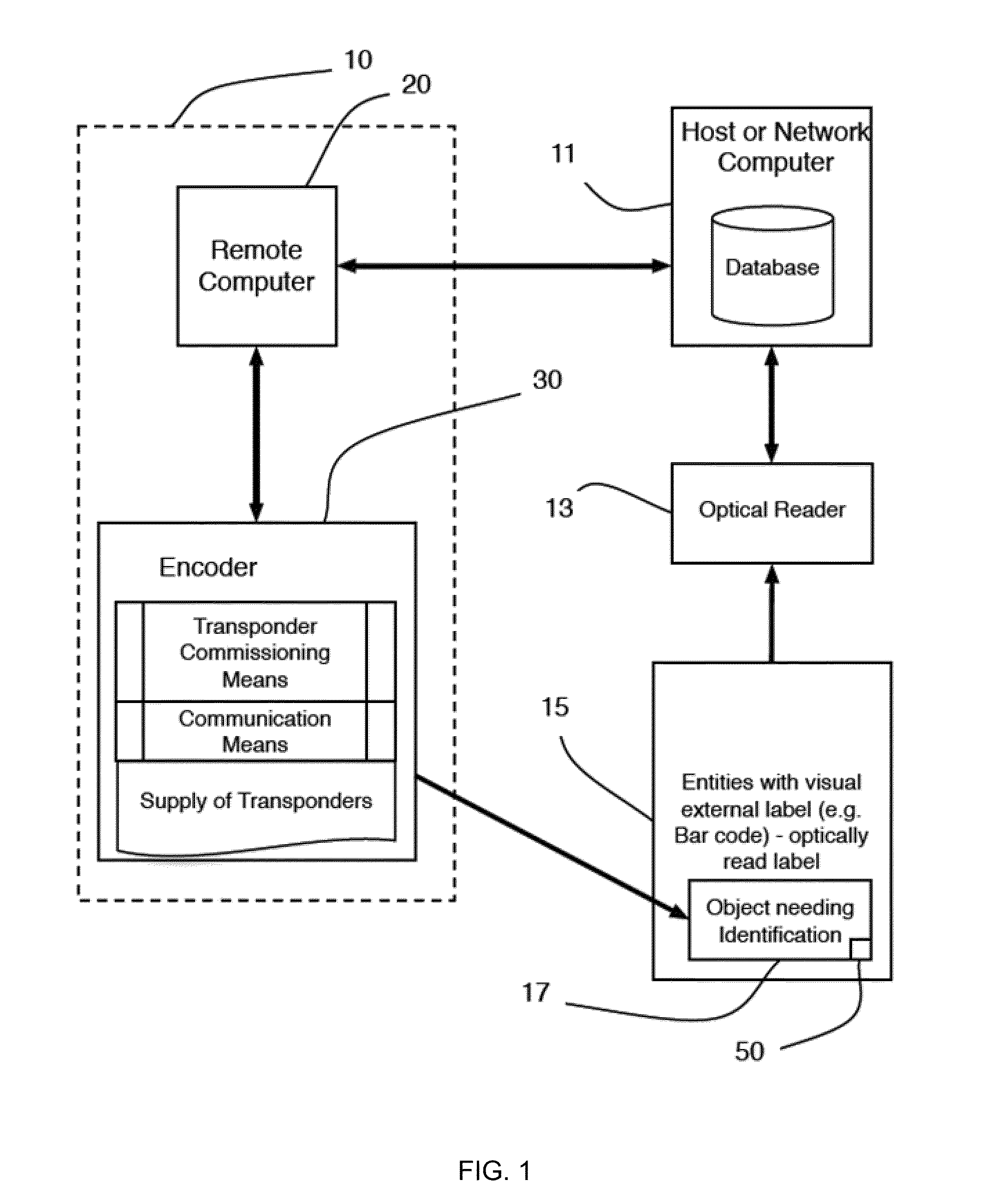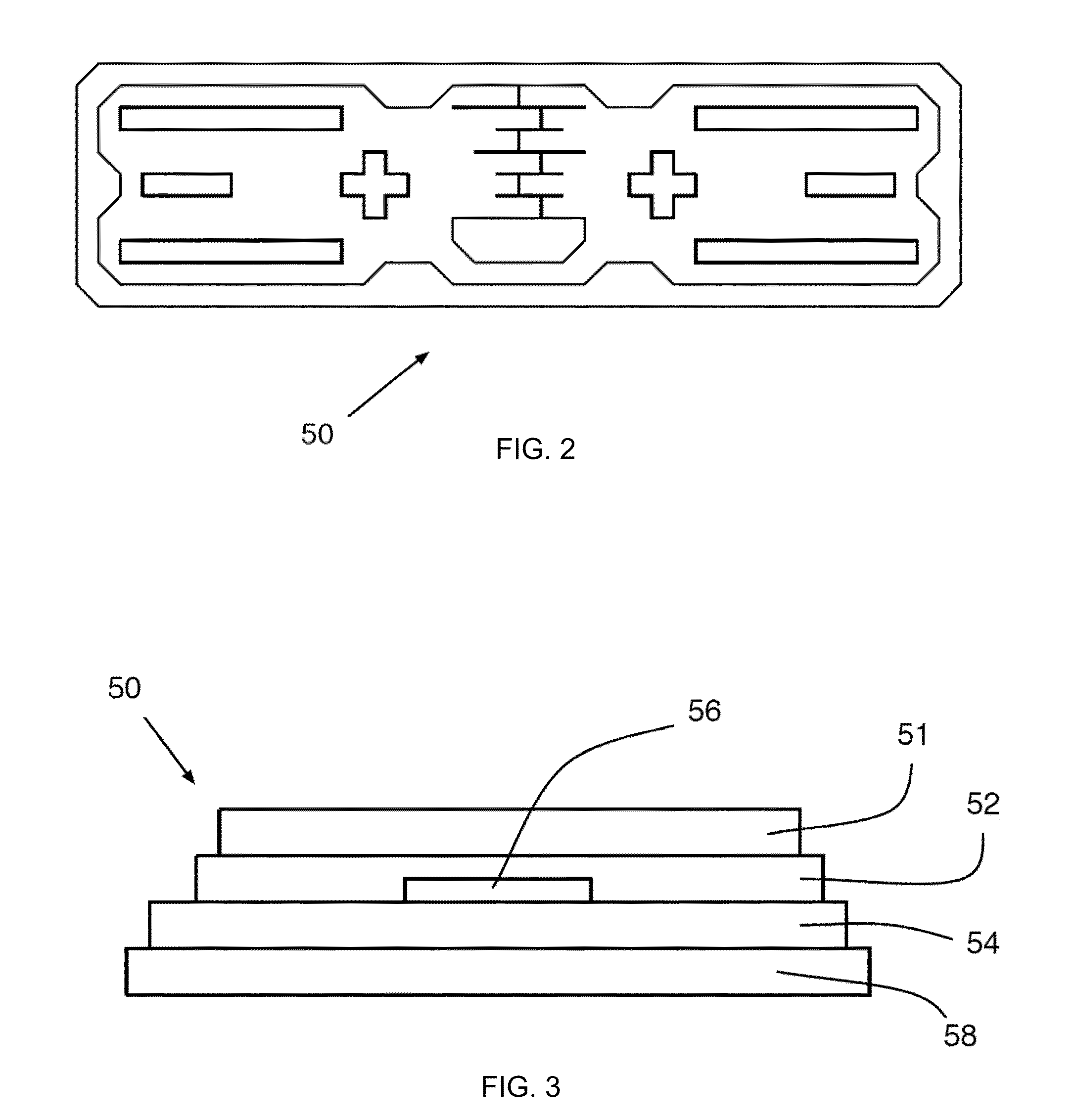Active transponders include batteries and, historically, are considered considerably more expensive than passive RFID transponders.
Many factors can render such a
label unreadable including printing errors, excess ink, insufficient ink, physical destruction of the markings, obstruction of the markings due to
foreign matter, and, in extreme cases, outright deception by placing an altered
label over the top of such a print label.
However, current RFID label systems have their own limitations as well.
One shortfall of prior-art RFID systems is the total cost for encoding and applying
wireless sensors.
In the case of manual encoding and application of RFID transponders or wireless sensors, the cost is dominated by labor costs.
Non-deterministic delays are delays that cannot be guaranteed, usually due to the probabilistic nature of packet collisions that are common in
Ethernet and WiFi.
This method is more expensive in every respect.
el. This approach, however, introduces unnecessary waste, cost, and propensities for er
tions. Unneeded printer mechanisms create unnecessary complexities, size, and
weight. In some instances this additional bulk hinders practical mobile appli
cations. The result is that tagging solutions that include printing result in a higher
total cost of ownership than a pure RF tag encodin
As with the aforementioned references, this approach adds unnecessary cost and complexity by combining RFID transponders with demand-printed labels.
This patent fails to offer any methods or devices for reading bar code information and using that information to
encode an RFID
transponder.
In particular this patent fails to disclose any methods for conveyance of RFID transponders as part of a well-controlled
transponder encoding process.
The
physics of Garber's invention is poorly suited to
programming anything other than one transponder at a time that is carefully isolated by great distances from any other RFID transponder to avoid
programming information into the wrong transponder.
This operating distance, however, lies beyond a close-range distance of a couple of inches and is limited to interrogation and data-acquisition, not encoding.
Further, such devices are unable to limit their communication to RFID transponders that are in close-proximity of a few inches of the operator holding a hand-held
encoder that includes a near field coupler.
This, along with their Jun. 20, 2000 U.S. Pat. No. 6,078,251, “retrieve object identification data from a selected object.” However, these disclosures fail to address controlling the inherently propagative nature of the electric fields of radio
waves in order to
restrict their range to within the width of a single transponder.
However, this disclosure does not address the need for shielding and near-field coupler design to optimize the inherent long-range characteristics of the RFID transponder.
However, this disclosure does not address creating and encoding a
unique identifier for attachment to and subsequent identification of the asset.
Exposing an
adhesive during these steps would obviously result in an unintended grouping of EM devices, stuck together, preventing passage of any additional EM devices.
Associating an encoded EM device of the correct type to an object of the correct type, is a vital step that is significantly prone to
human error.
Roberts does not teach any method for advancing and detaching programmed EM devices or RFID tags from a roll of conveyance web or
release liner.
In fact, the issue of uniqueness is not adequately addressed in his U.S. Pat. No. 6,677,852.
Despite Landt's efforts to broadly describe the instructions, he falls short of showing that he in any way anticipates the need for or challenges of writing unique serial numbers to uniquely identify RFID tags.
In fact, a conveyor would in many instances be either an added capital expense or a hindrance to a
business process for tagging products away from a conveyor line.
Without that information, the prior art is unable to direct the RFID interrogation fields to the correct area on each label.
Waters fails to make the case for achieving the required functionality on a typical RFID tag.
In the absence of a proper control of this critical factor, the tags will not release, or will partially release, causing the applicator to clog or jam.
The methods of applying an RF stamp to a
target surface, as disclosed by Eberhardt, are not easily and quickly conducted.
Those skilled in the art know that
metal detunes the RFID transponder's antenna, and that liquids absorb radio energy just as they would in a
microwave oven, resulting in heat, not
RF communication.
This posed a problem for customers that bought RFID printers from Feltz's company.
They found that the RFID tags that were encoded on his printer were not able to function when placed onto about 20% of the goods that are normally found in a retail supply chain.
As such, Feltz does not really solve the mandate problem that he refers to in his
paragraph where he makes the inaccurate statement that “One requirement is that certain
record members e.g., compliance labels contain transponders”.
Even worse, those elements prevent his invention from dispensing the thicker type of RFID tag that actually works on what those skilled in the art refer to as “RF-challenged” goods that contain
metal or liquid.
The extra bulk reduces the mobility of his printer and consumes significantly more power, whereby ruling out any anticipation of a battery operated mobile
encoder.
It is obvious that Feltz did not anticipate any of these things because his antenna selectivity is inadequate for that.
Though in the
scenario that the RFID transponder is not already on the
package, Bennett's novel ideas are no longer of much value.
By not having a means to peel an RFID transponder from its
release liner, Bennett's invention is at a major
disadvantage in tagging large volumes of item level
consumer goods.
When compared to the application of item level
consumer good tagging, the prior art fails to address 1) the difficulty of efficiently applying RFID transponders to an object, and 2) the difficulty of producing a unique data identifier based off the items stock-keeping unit (SKU).
Furthermore, he fails to address the use of a single RFID interrogator for encoding cards (or tags) as well as interrogating the memory device that contains information about the card supply.
So, despite recent advances in RFID technology, the state-of-the-art does not fully address the needs of simple, efficient, economical, high-volume, reliable deployment and commissioning of RFID transponders and wireless sensors.
 Login to View More
Login to View More  Login to View More
Login to View More 


